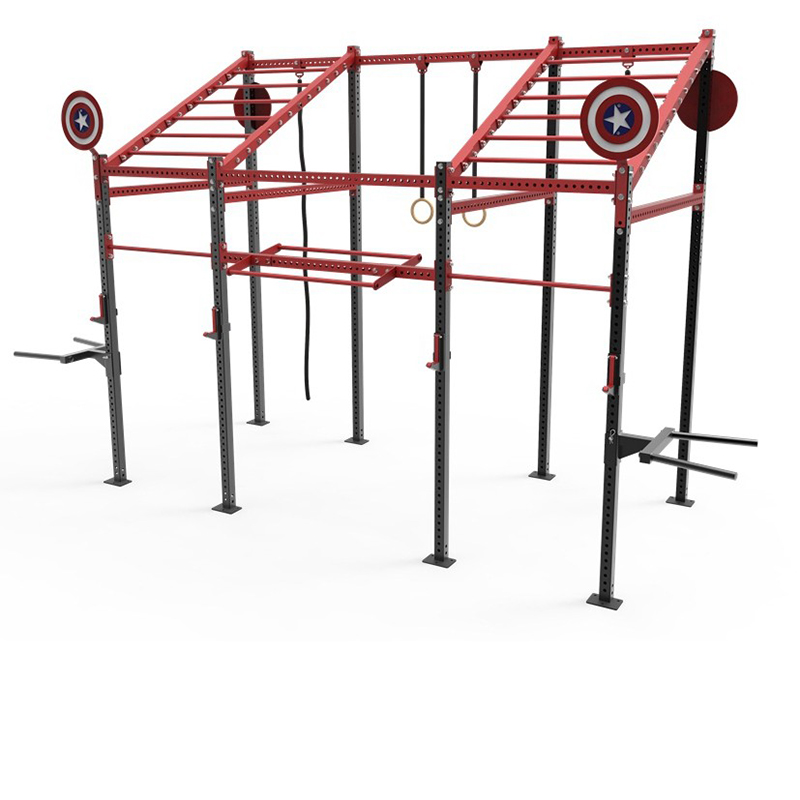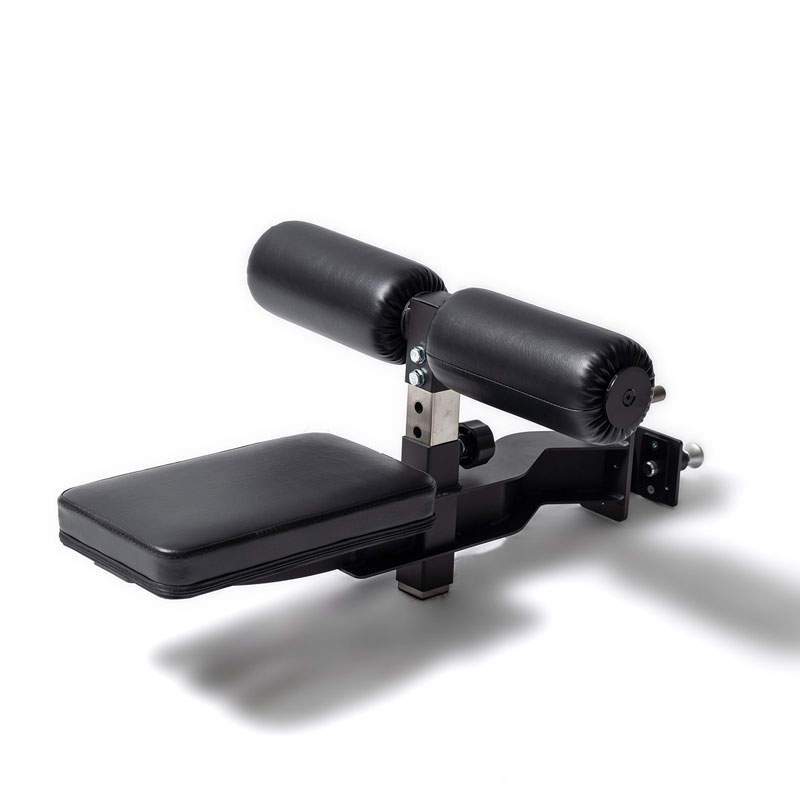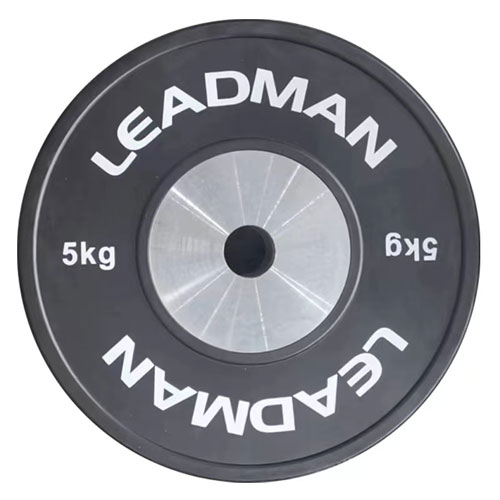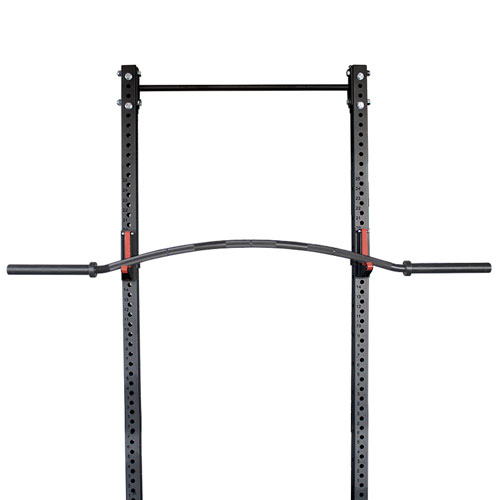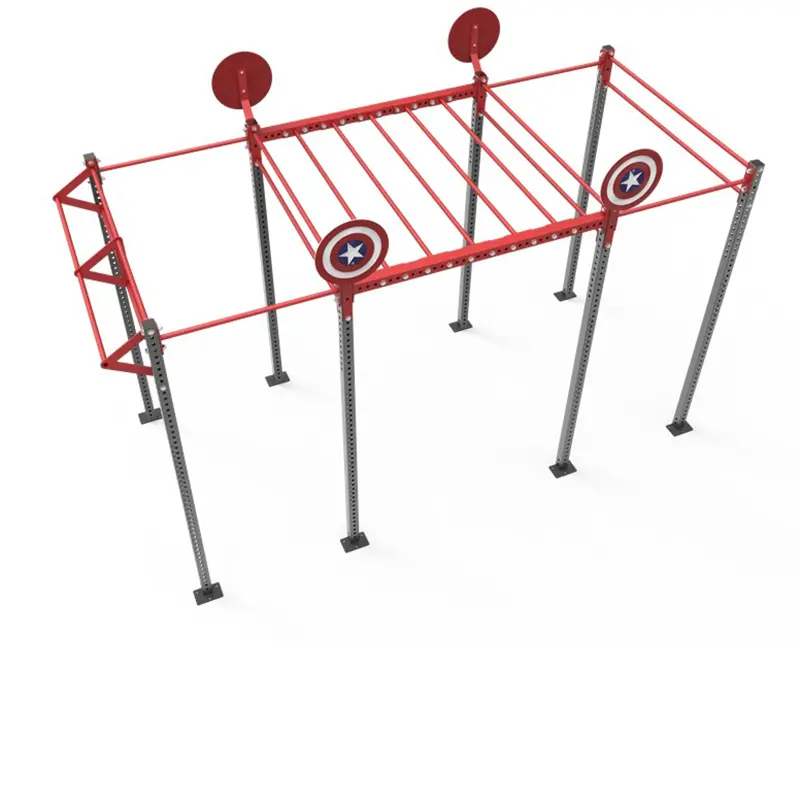Quanto è importante usare un tappetino sotto la panca per i pesi?
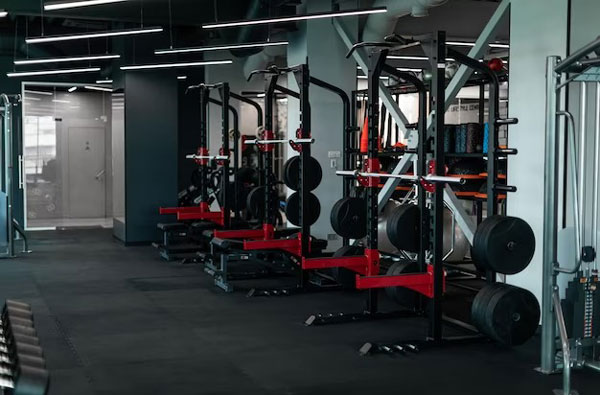
Imagine this: You're finally setting up your dream home gym, meticulously choosing weights, a sturdy weight bench, and… a gaping hole in your plan. That nagging feeling in the pit of your stomach telling you something's missing? It might be a mat. The creaking of your hardwood floors as you lower that heavy barbell, the worried glance at your expensive Persian rug, or the impending dread of a neighbor's noise complaint – these are all scenarios that highlight the importance of considering a mat for your weight bench. So, the core question: Is a mat necessary under a weight bench? The answer, as we'll explore, is nuanced. A mat under a weight bench isn't always essential, but offers significant benefits depending on your situation and priorities. This guide will help you determine if a mat is a crucial investment or an optional extra.
Proteggere i pavimenti: Prevenire danni costosi
Your flooring is a significant investment, and damage from a weight bench can be surprisingly extensive and expensive to repair. The type of flooring you have drastically affects its vulnerability.
- Legno duro: Prone to scratches, dents, and indentations from dropped weights or the constant pressure of the bench's legs. Repairs can involve costly sanding, refinishing, or even replacing entire planks.
- Tappeto: While seemingly more forgiving, heavy weights can flatten the pile, creating permanent indentations. Moisture from sweat can also seep into the padding, leading to mildew and unpleasant odors.
- Piastrelle:In genere sono più resistenti, ma le cadute di pesi possono comunque scheggiare o incrinare le piastrelle, con conseguenti costose sostituzioni.
- Calcestruzzo:È il più resistente, ma anche il calcestruzzo può subire col tempo macchie e rientranze, soprattutto con i pesi più elevati.
A simple mat can act as a buffer, absorbing impact and preventing these costly damages. Imagine replacing a damaged hardwood floor: the labor, material costs, and disruption to your home can easily run into hundreds, even thousands, of dollars. A preventative mat, on the other hand, costs a fraction of that and offers long-term protection.
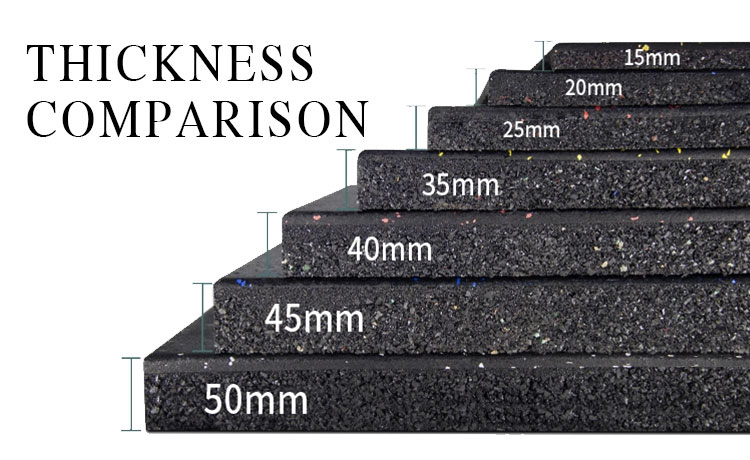
Reducing Noise and Vibration: A Harmonious Home Gym
Il sollevamento pesi genera inevitabilmente rumore e vibrazioni, soprattutto con i pesi più pesanti e gli allenamenti intensi. Il tonfo dei pesi, il rumore del metallo e le vibrazioni che attraversano il pavimento possono essere fastidiosi per la casa e soprattutto per i vicini.
Repeated loud noises can lead to friction with roommates or neighbours, potentially escalating into complaints or even legal issues. A thick, well-designed mat significantly reduces noise and vibrations. Materials like rubber and high-density foam are particularly effective at absorbing impact sound.
Consider the scenario of living in an apartment building. The sounds of your workout, amplified by the building's structure, can travel easily to neighbouring units. A mat can be the difference between maintaining harmonious relationships with your neighbours and facing complaints or conflicts.
Migliorare la stabilità e la sicurezza: Un allenamento più sicuro
A mat doesn't just protect your floors; it also enhances the stability and safety of your weight bench. Uneven surfaces can cause the bench to wobble, increasing the risk of accidents. A mat provides a level, stable base, preventing slippage and ensuring a secure workout. This is especially important during demanding exercises like bench presses or overhead presses, where stability is paramount to avoid injury.
A stable bench reduces the chance of the bench shifting during heavy lifts, minimizing the risk of dropped weights or injuries. The increased safety benefits not only the user but also protects the surrounding environment from damage caused by accidental weight drops.
Tipi di tappetini per panche per pesi: Trovare la misura perfetta
The market offers a variety of mats specifically designed for weightlifting. Choosing the right one depends on your needs and budget.
- Tappetini in schiuma:Convenienti e relativamente leggeri, offrono una buona ammortizzazione e riduzione del rumore. Tuttavia, potrebbero essere meno durevoli di altre opzioni e possono comprimersi nel tempo.
- Tappetini in gomma: More durable and provide superior shock absorption and noise dampening. They're more expensive but offer long-term value.
- Tappetini per puzzle: Interlocking tiles that can be customized to fit any space. Easy to clean and replace individual tiles if damaged. However, the seams can be a tripping hazard.
- Tappetini da yoga: Generally thinner and less durable than dedicated weightlifting mats. Suitable for lighter weight training but not ideal for heavy lifting.
Consider the size and thickness of the mat. It should extend beyond the base of the weight bench to provide adequate protection and stability. Thicker mats (at least ½ inch to 1 inch) offer better cushioning and noise reduction.
(Includere qui i link ai tappetini consigliati su Amazon o altri rivenditori).
When a Mat is Absolutely Necessary: Non-Negotiable Situations
In alcune situazioni, un tappetino non è solo consigliato, ma assolutamente necessario.
- Appartamento Living:Il potenziale di reclami per il rumore e di danni ai pavimenti condivisi rende indispensabile un tappetino.
- Pavimenti delicati: Hardwood, parquet, or tiled floors require extra protection. The risk of irreversible damage far outweighs the cost of a mat.
- Appartamenti al piano superiore:L'impatto dei pesi è amplificato ai piani superiori, rendendo ancora più critica la riduzione del rumore.
Il mancato utilizzo di un tappetino in queste situazioni può comportare costose riparazioni, rapporti tesi con i vicini o addirittura controversie legali.
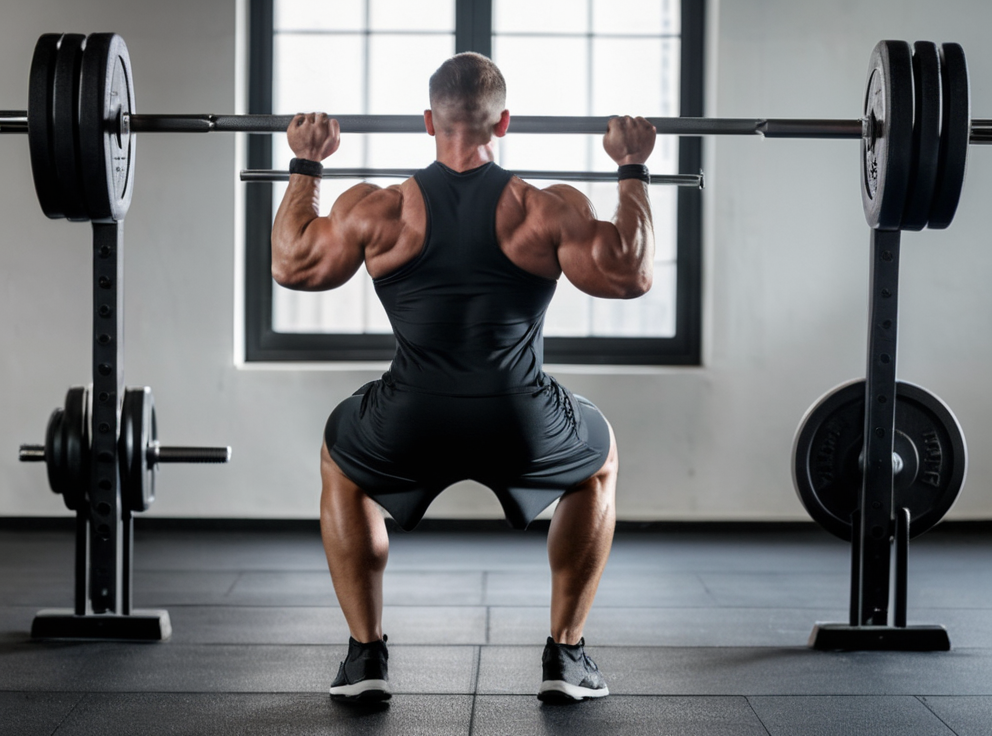
When a Mat Might Be Optional: Weighing the Costs and Benefits
In alcuni scenari, la necessità di un tappetino è meno critica.
- Pavimenti in cemento:Il calcestruzzo è naturalmente resistente ai danni, per cui un tappetino è meno essenziale. Tuttavia, un tappetino può comunque migliorare la stabilità e ridurre il rumore.
- Garage:L'ambiente di un garage è solitamente più clemente e il potenziale di danno è ridotto.
- Sale di allenamento dedicate con pavimentazione resiliente:Se si dispone di una stanza dedicata all'allenamento con una pavimentazione in gomma o simile già installata, un tappetino potrebbe essere superfluo.
In these situations, a cost-benefit analysis is appropriate. Weigh the price of a mat against the potential risks of damage or noise complaints. If the risks are minimal, a mat might be an optional expense.
Alternatives to Mats: Exploring Other Options
I tappetini sono la soluzione più comune, ma esistono anche altre opzioni.
- Compensato: A sheet of plywood can provide a solid, level base for the weight bench. However, it offers no cushioning or noise reduction.
- Tappeto per impieghi gravosi:Una moquette spessa può offrire una certa protezione, ma con il tempo potrebbe comunque presentare delle rientranze.
Queste alternative sono di solito meno convenienti ed efficaci dei tappetini per il sollevamento pesi, in quanto non offrono i vantaggi in termini di ammortizzazione, riduzione del rumore e stabilità.
Conclusione: Fare la scelta giusta
A mat under a weight bench offers multiple benefits: floor protection, noise reduction, enhanced stability, and increased safety. Whether or not it’s necessary depends on your specific circumstances. Consider your flooring type, your living situation, the intensity of your workouts, and your budget. If you're in an apartment, have delicate floors, or are prone to dropping weights, a mat is virtually non-negotiable. If you have resilient flooring and a dedicated workout space, it becomes a more optional, though still beneficial, investment. Prioritize safety and consider the long-term cost of potential damage against the relatively low cost of a protective mat.
Sezione bonus: Soluzioni per tappetini fai da te
For the budget-conscious, consider repurposing thick rubber sheets, interlocking foam tiles, or even using multiple layers of cardboard or heavy-duty padding for a more economical, albeit less aesthetically pleasing, solution. Remember, safety and effectiveness are paramount regardless of your chosen method.
FAQ sull'uso di un tappetino sotto la panca per pesi
1. Perché dovrei usare un tappetino sotto la mia panca per pesi?
L'uso di un tappetino sotto la panca per pesi protegge il pavimento da graffi, ammaccature e altri danni causati dai pesi pesanti o dalla pressione costante. Inoltre, riduce il rumore, evita le vibrazioni e fornisce una base stabile, garantendo un allenamento più sicuro.
2. Posso utilizzare qualsiasi tappetino sotto la mia panca per pesi o ne occorre uno specifico?
Anche se qualsiasi tappetino può offrire una certa protezione, l'ideale è un tappetino progettato specificamente per il sollevamento pesi. I tappetini in gomma o in schiuma ad alta densità offrono un migliore assorbimento degli urti, una riduzione del rumore e una maggiore stabilità rispetto ai tappetini domestici standard.
3. Ho bisogno di un tappetino se ho un pavimento in cemento?
I pavimenti in cemento sono resistenti ai danni, ma l'uso di un tappetino offre comunque dei vantaggi. Aiuta a ridurre il rumore, migliora la stabilità della panca pesi e aggiunge un'ulteriore ammortizzazione per un allenamento più confortevole e sicuro.
4. Come scegliere il tappetino giusto per la panca pesi?
Considerate fattori come la durata, lo spessore e il materiale. I tappeti in gomma sono molto resistenti ed efficaci nella riduzione del rumore. Uno spessore di almeno mezzo pollice o un pollice garantisce una migliore ammortizzazione e stabilità. Assicuratevi che il tappetino sia abbastanza grande da coprire l'intera area sotto la panca per pesi.

